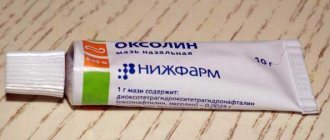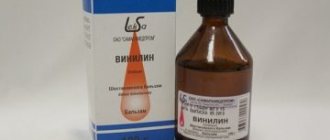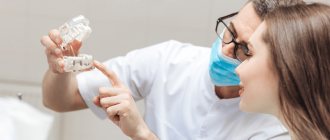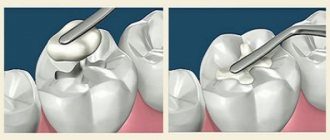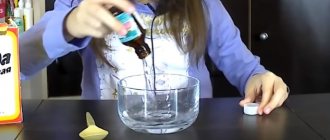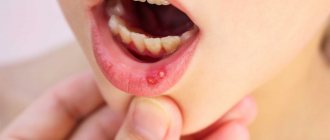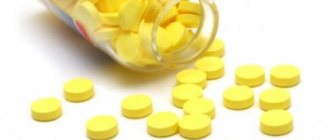1617
Stomatitis - the name of this disease comes from the Greek word for “mouth”, and it is characterized by damage to the mucous membrane. Medicine has not yet fully elucidated the mechanism of its appearance. It is believed that this is a kind of immune reaction to extraneous irritants.
Stomatitis occurs in children of all ages, but adults can also encounter this rather unpleasant disease.
For many decades, sodium tetraborate, or borax in glycerin, was considered the main means of combating this disease.
What does it represent?
Sodium tetraborate is produced on the basis of boric acid, recommended for use in the treatment of diseases in adults. Expert advice - the drug is quite toxic, so its use for the treatment of children and pregnant women is allowed only with the permission of the attending physician .
For stomatitis, the effect of a borax-based drug is aimed at eliminating foci of spread and eliminating the internal causes of its occurrence.
Sodium tetraborate has fairly strong antibacterial and antiseptic properties, which prevents the appearance and further spread of fungus on the mucous membrane.
Borax completely destroys the attachment of the fungal fraction to the oral cavity and prevents the proliferation of its spores.
The drug is used:
- for rinsing the mouth;
- for sanitation of ulcers using a cotton swab or sterile napkin;
- for applying special applications to the affected areas of the mucous membrane.
When treating the mucous membrane, it is necessary to take into account that this drug is very quickly absorbed by the body and enters the digestive system , and is excreted through the kidneys and intestines.
pharmachologic effect
The key active ingredient of the drug, the sodium salt of boric acid, has a pronounced disinfectant and bacteriostatic effect , which is manifested in the effective removal of the causative agent of stomatitis and in preventing its further development.
Another important component is glycerin, which helps reduce the irritant effect caused by boric acid salt. In addition, it accelerates the penetration of borax through the oral mucosa, thereby increasing the effectiveness of its effect on fungal formations that cause stomatitis.
When applied topically, the borax solution is quickly absorbed through the mucous membrane, processed by the digestive system and removed from the body through the excretory system.
Release forms and application
Sodium tetraborate is used to treat the disease if it was caused by the spread of a fungus, only as a supplement to eliminate symptoms .
There are two main types of drugs in wholesale sales:
- Rinse tablets : no more than 2 pcs. dissolve in water and rinse your mouth after eating. The child is not allowed to rinse, as there is a high risk of swallowing the solution, which is in no case recommended due to the risk of poisoning;
- A 20% solution of borax in glycerin , packaged in 30 gram bottles, is used for the local treatment of ulcers in children. This is safe, since using a cotton swab you can effectively treat all wounds without exposing the child to the risk of overdose.
One bottle lasts for a week if the disease was detected at an early stage of manifestation.
Stomatitis in its infectious form is characterized by a rash of ulcers with a hard crust, which prevent the medicine from penetrating deep into the mucous membrane. Before processing begins, these crusts must be removed.
Using a cotton swab soaked in an oil solution of vitamin A, they are softened and then carefully removed. The wounds themselves are moistened with a borax solution.
The sooner you start treatment with sodium tetraborate, the faster you will achieve the desired effect , the extinction of symptoms and the elimination of the infection itself.
Read our recommendations on how to treat stomatitis in a child in the next publication.
In this article, we will talk about ways to treat mouth ulcers at home.
Here https://www.vash-dentist.ru/lechenie/bolezni-polosti-rta/stomatit-bpr/aftoznogo-u-vzroslyih-i-detey.html you will find photos illustrating the treatment process for aphthous stomatitis.
General information
Sodium tetraborate is also known as borax.
It is a powerful antiseptic used for the therapeutic treatment of many diseases. The product is better known in dental practice as the best among all known in the treatment of stomatitis. A weak solution of sodium salts and glycerin has a beneficial effect on damaged areas of the mucosa, destroys pathogenic microflora, soothes, and quickly improves the clinical picture.
It is used as a treatment as follows:
- hygienic rinses;
- local treatment of ulcerative structures using a tampon;
- applications with solution.
The drug is known in gynecological practice as an effective drug for the treatment of diseases caused by the fungus Candida (thrush), in otolaryngology - for the treatment of otitis media, inflammation of the paranasal sinuses.
Borax is the main component of many drugs for the treatment of diseases of the upper respiratory tract; it has a depressing effect on fungal flora, destroying all ulcerative elements of the oral cavity.
The product prevents the development of new local inflammatory areas. The medicine is very quickly absorbed by the body, enters the esophagus, and is excreted in feces or urine (intestines/kidneys, respectively).
Use for infants
For several decades, a solution of borax in glycerin has been used to treat stomatitis in infants, because it effectively removes fungal spores from the mucous membrane and prevents their reappearance.
Algorithm for sanitation of children's mouths:
- wash your hands with soap;
- take a sterile bandage and wrap your index finger;
- moisten the bandage with a medicinal solution;
- start processing: clean the tongue, remove plaque on the inner surface of the cheeks and lips;
- repeat similar steps after each breastfeeding.
Ease of use, low price and effectiveness of the drug are the reasons for its widespread use. Within two days you will see noticeable improvements.
Young mothers should remember that after the ulcers have healed, they need to continue sanitation of the child’s mouth for several more days to consolidate success and prevent relapse.
There is still controversy among doctors regarding the use of sodium tetraborate for the treatment of infants. Many argue that this drug is quite toxic and is not excreted from the body ; moreover, it has a number of contraindications for use.
For information about the advantages and disadvantages of various methods of treating stomatitis in children, watch the video:
If you have serious doubts about using this remedy, then use a proven remedy from our grandmothers: one spoon of baking soda per glass of boiled water, moisten a sterile bandage in this solution and carry out sanitation as described above.
Treat milk bottles and nipples with a 2% boric acid solution and pour boiling water over them.
Doctors recommend sanitizing with a napkin or bandage, because a cotton swab or swab will not be able to apply the necessary pressure to the affected areas - such treatment will not have an effective effect on fungal spores.
Reviews
Sodium tetraborate is considered the most effective remedy in the fight against stomatitis. Reviews from many parents of young patients and adult patients about the drug are only positive.
Despite the toxicity of the drug to the human body, no fatal cases have been reliably identified while taking borax. If you have experience using sodium tetraborate in the treatment of stomatitis, you can leave your feedback in the form below.
To learn how to properly approach the treatment of stomatitis, watch the video.
Treatment of older children
The use of a borax-based drug for the treatment of stomatitis in older children is carried out according to the following scheme :
- for rinsing, prepare a solution: take a glass of chilled boiled water, add 1 tbsp. l. rock salt, add ½ tsp. borax in glycerin;
- we treat ulcers or inflamed areas according to the method described in the previous section.
When using this drug for the treatment of pediatric stomatitis, an overdose is excluded, but parents should be aware of its negative manifestations:
- pain appears in the abdominal area;
- the child complains of a headache;
- frequent bouts of vomiting;
- convulsions and partial loss of consciousness;
- lack of appetite;
- development of arrhythmia.
Serious consequences of an overdose can be:
- dysfunction of the liver and kidneys;
- problems with the functioning of the heart and circulatory system.
If any of the above symptoms appear, you must immediately show your child to a doctor.
Side effects
The drug is highly toxic, and therefore has not only numerous contraindications, but also side effects even when used correctly. Among these are:
- itching in the localization of the treatment site;
- swelling of mucous areas;
- irritation and hyperemia of the mucous membranes in the sanitization area.
With proper use and precise dosage, side effects are more common in patients with a severe allergic reaction to the components of the drug.
If the treatment of stomatitis with borax solution in children cannot be controlled, then alternative treatment methods with safer drugs should be chosen.
Recommendations for adults
It must be remembered that only a doctor can prescribe the correct treatment based on the diagnosis, and the course of therapy itself depends on the causes of stomatitis and its form:
- Treatment of the chronic form of the disease in adults is carried out with the help of antibacterial, restorative drugs, including the use of borax in glycerin;
- Treatment of herpetic stomatitis is carried out with antiviral drugs.
The treatment regimen consists of two directions: general and local.
Local treatment fights various harmful bacteria, while the natural microflora is normalized, ulcers heal, pain is reduced, and soft tissue swelling is eliminated.
For acute stomatitis, similar therapy should be carried out every day: the mucous membrane of the oral cavity, larynx and visible part of the throat is treated with a gauze or cotton swab moistened with a solution of borax in glycerin, up to 6 times a day for a week.
If necessary, such wiping continues after the specified period, but after consultation with the attending physician.
When the disease becomes chronic , a similar treatment is done every other day for 3 weeks, but it must be remembered that an advanced disease quite often leads to negative complications.
Ulcers must be healed completely; sea buckthorn oil or Solkoseril gel are suitable for this purpose. During treatment, you must avoid hot and spicy foods that irritate the wound.
Additional measures
To avoid re-infection, you must follow the following rules:
- monitor your child’s oral hygiene;
- stop biting your nails and putting things in your mouth;
- treat dishes with boiling water: nipples, bottles, plates;
- replace a toothbrush with hard bristles with a soft one;
- treat nipples before breastfeeding;
- Do not feed your baby too hot food.
To reduce pain when eating, special pain-relieving gels are used. In case of extensive damage to the mucous membrane, the spoon can be replaced with a straw, while giving the child only liquid food.
Avoid sour and spicy-tasting foods during treatment so as not to further irritate the mucous membrane. Make sure that the diet is enriched with the necessary mineral and vitamin composition.
Attention must also be paid to the hygiene of the child’s room. It is necessary to regularly wipe surfaces from dust with a damp cloth, replace vacuuming with a damp cloth, monitor the freshness of the air, and if it is excessively dry, humidify the air in the room.
Along with treatment, it is necessary to strengthen the child’s immune forces and ensure rapid restoration of the affected tissue. For this use:
- Aekol - for applications;
- Vinylin - for quick healing;
- Solcoseryl - to restore damaged tissues;
- Sea buckthorn oil - to relieve pain and restore the epithelium.
To speed up tissue healing, rinse with herbs (between the main treatment). To do this, use chamomile, which has antiseptic wound-healing properties. You can use any herbs with an astringent and antiseptic effect (oak, sage, marigold). They also make applications of aloe juice with honey, and rinse the mouth with propolis tincture.
Baking soda with salt is a common remedy for ulcerative lesions of the mucous membrane. For small children, prepare in the following proportion: a coffee spoon of soda and salt per cup of cooled boiled water. If the baby does not know how to rinse his mouth, wipe the mucous membrane with the solution - moisten the gauze and treat the mouth.
Sources used:
- Medicines in dentistry. Directory / L.N. Maksimovskaya, P.I. Roshchina. - M.: Medicine, 2001.
- “Outpatient surgical dentistry” (Bezrukov V.)
- Mashkovsky M.D. Medicines. — 15th ed. - M.: New Wave, 2005.
- https://www.cdc.gov/niosh/npg/npgd0057.html
Indications and contraindications
The therapeutic effect of sodium tetraborate is characterized by quite strong bactericidal, antifungal and antiseptic properties.
It is used to treat internal and external surfaces for various types of fungal diseases, because it eliminates spores and prevents their reproduction.
This medicinal drug is used in the following cases :
- damage to the skin (the appearance of ulcers, cracks);
- pharyngitis - inflammation of the mucous membranes of the pharynx;
- tonsillitis;
- stomatitis in newborns;
- skin fungus;
- diaper rash in skin folds;
- formation of bedsores;
- periodontal disease.
Part of the drug penetrates the gastrointestinal tract, which can lead to negative consequences; Borax in glycerin is excreted in the same way as liquid and food.
This drug can accumulate in the liver and partially in bone tissue; its presence in the body, even after a single use, remains for a week.
Contraindications for sodium tetraborate are as follows:
- increased reaction of the body to external stimuli, in particular to this drug;
- damage to the skin or mucous membrane in the area of intended treatment;
- pregnancy;
It is strictly forbidden to take it internally.
This solution belongs to toxicity class 4 , so when carrying out treatment, especially in adolescents, you should be extremely careful.
20 g of borax is considered a lethal dosage, the maximum concentration in the blood is 40 mg/l, lethal - more than 50 mg/l.
We will tell you how to use oxolinic ointment for stomatitis in a separate article.
We will discuss which oral irrigator is best to choose here. What determines the price of devices?
At the link https://www.vash-dentist.ru/lechenie/bolezni-polosti-rta/stomatit-bpr/v-domashnih-usloviyah-2.html we have collected tips on how to treat stomatitis in adults at home.
Precautionary measures
An adult’s body reports an overdose
- frequent loose stools;
- general weakness of the muscular system;
- causeless urge to vomit;
- spasms of the limbs and facial muscles;
- the appearance of dermatitis.
If the above symptoms appear, you must immediately perform gastric lavage and stop using this drug.
Sodium tetraborate solution is still used to treat severe cases of fungal stomatitis in newborns, but only for the treatment of ulcers.
This medicinal drug has pronounced side effects :
- menstrual irregularities in women;
- the occurrence of seizures in children of different ages;
- noticeable redness, burning, irritation at the site of application;
- manifestations of dermatitis;
- hair loss or impaired hair growth;
- anemia or anemia;
- intoxication from long-term use;
- gastrointestinal tract malfunctions;
- partial or complete lack of appetite.
When used correctly, this drug effectively affects only areas affected by infection and prevents the proliferation of fungal spores without any negative consequences for the body.
Caution and attention are the key to successful treatment.
Price
Sodium tetraborate solution can be purchased at any pharmacy in the Russian Federation: pharmacies in St. Petersburg offer the drug at a price of 8.25 to 15 rubles per bottle with a capacity of 30 grams.
In Moscow, the same drug can be bought at a price of 14 to 20 rubles . Before visiting the nearest pharmacy, it is better to call several to find out the price range - when buying one bottle this does not make a significant difference, but for a full course lasting 3 weeks, the savings will be significant.
